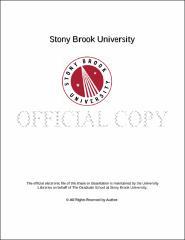| dcterms.abstract | Nano-particles are great additives to the thermal properties of the polymers, however, they sometimes have some disadvantages on the mechanical properties. The mixing of polymers and nano-particles such as cloisite clays, graphene, melamine polyphosphate and molybdenum disulfide, are mostly physical reactions between them. Therefore, the dispersion of the nano-particles inside the polymers is very important. As for the frame retardant of the polymers, the additives are used as three most important components during the mixing, i.e. the acid source, the carbonization agent (or char forming agent), and a blowing agent. The better the particles disperse in the polymer, the easier the material will blow and form chars during the combustion. Some of the nano-particles are used for heat conduction, which means if they have a better thermal conductivity and are better dispersed in the polymer, will certainly be benefit for the frame retardant. On the other hand, as for the gas permeability of the material, which means the gas diffuses through the polymer. Permeation is something that must be regarded highly in various polymer applications, due to their high permeability. Permeability depends on the temperature of the interaction as well as the characteristics of both the material and the permeant component. For pure polymers, since there is no additives and due to their own defects of the microstructure, gas will easily diffuse via the defects of the polymers. However, when nano-particles are mixed with the polymer, they will form barriers in the polymer and will make the gas to go a further path when it diffuses in a polymer. Hence, the well disperse of the nano-particles will be one of the key elements to reduce the gas permeation of the polymer and another factor which will impact the results will be the length over the width of the barriers. During the whole research, we focused on the most popular polymers like high density polyethylene (HDPE), low density polyethylene (LDPE), polypropylene (PP) and poly (lactic acid) (PLA). And the nanoparticles we used are, closite clays, graphene (GNPs), melamine polyphosphate (MPP), and molybdenum disulfide (MoS2). We successfully obtained some materials which have excellent frame retardancy properties. We also get some materials that reduce the gas permeation with the help of these nano-particles. In this paper, we studied and demonstrated the MPP is a great agent when mixed with PLA and become an excellent self-extinguish material, which can achieve the request of V0 of UL-94 test. We demonstrated that, when PP is mixed with MoS2, MoS2 has a good dispersion in PP, so it is helpful to reduce the gas diffusion in PP, this will be proved by the scanning electron microscope (SEM) test. As it is known, crystallinity plays an important role to affect the gas permeation, we did differential scanning calorimetry (DSC) to calculate the crystallinity and study the migration of the melting temperature of PP/MoS2 system. Furthermore, we also test the mechanical properties of these materials such as Izod test which can provide the impact strength of the materials and tensile test which can help us with the modulus of the materials. We found that the modulus of PP/MoS2 system is enhanced and the impact strength is maintained. | |

